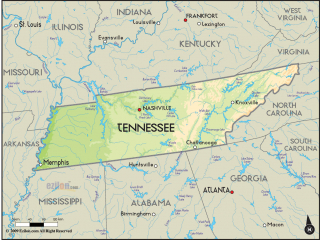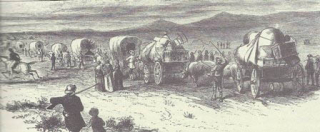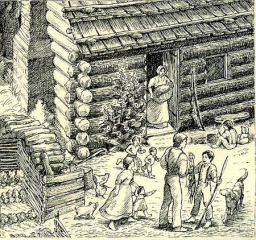Researching family history is like trying to complete a jigsaw puzzle without knowing how many pieces you’re meant to have or what the finished picture is meant to look like.
It can be both fun and tedious. It can have its surprising moments and eureka! moments but it can have frustrating times when somebody isn’t to be found where you expect them to be. Above all, it requires patience and a willingness to be methodical, to take matters step by step and not try to short cut the process.
Genealogy or Family History?
The two terms are often used as substitutes for each other but, strictly speaking, genealogy is the study of a pedigree, the direct line of ascendancy or descendancy, such as son, father, grandfather, great grandfather, great great grandfather and so on. It tells you the name of your ancestors but very little else.
However, the study of family history looks at all the branches of the tree. For each generation the siblings, aunts, uncles and cousins are recorded, together with where they lived and what they did. This is a much more interesting study. It often leads to the study of a particular area as we want to know more about where they lived, or of particular occupations, or of the social conditions of the time in which they lived.
In the USA, there are a number of sources of information available to us as we set about our task: primarily the Vital Records and Substitute Records plus additional sources.
Vital Records:
1. The civil records of births, adoptions, marriages, divorces and deaths should be available in state, county or city archives. The information available on such records may differ from state to state, county to county. It will also have changed over time as requirements are added or deleted.
Birth: Unfortunately, no births were recorded by government agencies prior to 1874.
Marriages: were generally recorded from (or within a few years) of each county’s formation and are kept by the county clerk. However not all counties in Tennessee did so and probably not all counties in other states. It was not until 1838 that clerks were required to keep the records in a well bound book and many of the loose marriage licenses and bonds have been lost.
Deaths: No deaths were recorded by government agencies before 1872. Most counties started keeping death records from 1908.
Substitute Records:
The lack of Vital Records for the period we’re looking at means that we are heavily reliant on what are known as Substitute Records including the following:
2. Church and cemetery records
Depending on the denomination, there may be church registers of baptisms (christenings), marriages and burials. Cemetery records often have more information than is on the gravestone. Such church and cemetery records may be available at the county archives.
3. The censuses conducted every ten years by the federal state.
Censuses tell us where a person was living and often provide family groupings. Sometimes the names of visitors staying at the house on the night of the census can provide additional clues, as can the names of other people living close by, in the same street or area, who may be siblings, grandparents, aunts, uncles or cousins.
The most recent census available to Americans is for 1940, which is more recent than in the UK where the information in the censuses isn’t made public for 100 years after the date and we have to wait another six years before we can access the 1921 census.
Unfortunately, most of the USA Federal Census of 1890 was destroyed by fire with only fragments remaining. Sadly, none of those fragments include Tennessee.
The details collected for each census varied from census to census and get less and less the further back we go.
The censuses pre 1840, whilst naming the head of the family or household, were simply head counts, giving the ages and sex of the other people in the household but not their names. However, they may still provide clues.
Censuses are useful but can contain errors or inconsistencies. Occasionally the person providing the information may not have known the full details and may have guessed or made a genuine mistake, with the name, age or place of birth. The further back we go, the more we find that people weren’t always sure of how old they were. They weren’t required to keep the same track of birth dates as modern life requires us to do.
Sometimes people used their formal birth name when they got married but were known informally by something quite different and the informal name was entered on the censuses. And, of course, abbreviated names were also used, or even just the initials, as happened with one of the Barnes family ancestors. He led me a merry dance!
There may be uncertainty regarding the place of birth. For one client, I traced an ancestor through four censuses and in the ‘place of birth’ column, the first census said Ireland, the second census said England, the third census said ‘at sea’ and thirty years after the first census, the person gave up and entered ‘not known’ in the place of birth column.
4. Social Security Death Index
The SSDI is a database of people who died from 1962 onward. Where known, the birth details were given. Unfortunately, we are interested in people who died before 1962 and so, for our purposes, the SSDI is of no help.
5. Historical records
Each country, state and county has different records but they may include such things as land registration and probate records. Not only do probate records help confirm or estimate when somebody has died, they often contain actual copies of wills, which throw light on family relationships.
It is worth checking with the state or county archives as to what is available for their area.
Apart from the Social Security Death Index, which was probably typed, all of the above records were handwritten and the handwriting may not be not easy to read. Therefore, errors in transcription happen and such errors often make it difficult to find the record, as happens at least once in tracing the Barnes family history.
In addition, before the spelling of first names and surnames were standardized, people wrote what they thought they heard. And so, we must be prepared to ‘hear the sound of the word’ and then look for the various ways in which that sound may have been spelled in the records. So we search for Barns as well as Barnes, Right as well as Wright.
Additional sources:
When using the additional sources, effort should be made to verify the information with the Vital Records or the Substitute Records. Evidently, the further back in time we go, the harder it is but that should not stop us attempting to do so.
6. Oral history passed down through the generations.
It should be noted that as family stories are told through the generations, what may once have been facts often become legends and myths as details are embellished. Important details may even be omitted. Therefore, whilst such oral history is important, attempt must always be made to verify the details by seeking out the sources which will confirm or deny the facts.
7. Family memorabilia such a family bible, letters and photographs.
Some families have extensive archives, some have very little. Many photographs have no names marked on them and the people who could identify the subjects have long since passed, leaving the family historian frustrated by not knowing who the people in the photograph are. However, the details in such photographs do assist in identifying people through the fashions of the time (easier with women than with men) and the backgrounds.
8. Newspapers often contain articles and interesting background information.
Local newspapers may contain announcements of births, marriages and deaths as well as accounts of local events. If it is thought that a particular event may have appeared in a newspaper, a visit to the physical or online archives may produce some amazing information.
Many historical records and newspapers have been photographed for microfilm and the films are available through libraries or archives. Others are being digitized. However, it is a long process and not all state records may have been fully digitized as yet. They may be available on state websites or for viewing online by way of a subscription to family history websites such as Ancestry.com and FindMyPast.co.uk (which includes records and newspapers from the USA).
9. Other people’s research
Many people have researched their family history and some have published it in books. State or county websites often contain references to such publications.
As I said at the beginning, family history research requires a methodical approach and not everybody is prepared to put the time and energy into doing it correctly. Therefore, if you come across some information which seems relevant, you must make every effort to verify the facts with Vital or Substitute Records before incorporating it into your family tree.
Ancestry.com member trees
Many family historians use the facility provided by Ancestry.com to build their own family tree. The owner may make the details public for all to see or may decide to keep it private. If the tree is private, the owner may make details available upon request.
The attention to detail given by those who decide to build a family tree on Ancestry.com varies wildly. Although there are places on the tree records to quote the source of the information, many people do not bother to enter the relevant details. Therefore dates and places of birth, marriages and deaths are often given without any means of knowing where the tree owner obtained the information.
Indeed, there are times when the information given appears to be based on conjecture and assumptions rather than fact and therefore the tree may be thought of almost as a work of fiction.
Many trees have been built by one person entering some information and others copying it to their own tree without any attempt at identifying the source. In such a way, people often build up enormous trees but, I must emphasis, quantity is not quality. I see no point in have a family tree which is not based on truth and fact. I would rather have a tree with 100 names on it, all properly researched and verified than one with 1000 names which I have merely copied from other trees and have not verified. That such copying takes place is often shown in the way spelling or typing errors are replicated.
As well as conducting primary research online, searching for the civil registration records and the censuses, I have also assessed what is available on the public member trees on Ancestry.com and found many of them to contain basic errors, such as giving particulars of a marriage for a member of the Barnes family which would have made that person six years old when they married, or including the marriage of the mother as the Barnes child’s own marriage. The marriage listed was three years before the listed date of birth. Surely the clue was in the date?
I have included some information from Ancestry.com public member trees which appears to make sense but which I have not able to verify and have noted it accordingly. Such cases should not considered as fact but as a prompt for further investigation. Hopefully they can be independently verified by members of the Barnes family visiting the city, county or state archives to find the original record.
Websites with interest for Tennessee State and Hardeman County family history researchers:
http://www.tn.gov/sos/bluebook/07-08/41-A%20History%20of%20Tennessee.pdf
https://familysearch.org/learn/wiki/en/Tennessee_Vital_Records
http://www.tn.gov/tsla/history/county/facthardeman.htm
https://familysearch.org/learn/wiki/en/Hardeman_County,_Tennessee#Quick_Dates
Each website lists historic information and a number of resources which are available, either in books or microfiche.
Other states and counties will have similar websites.
There are a few points to consider when researching the Barnes family history.
1. The State of Tennessee was formed in 1796, separating off from North Carolina.
2. The courthouse at Hardeman was set on fire in 1864, during the Civil War. It is thought that many of the records were taken to safety before the fire was started but that perhaps not all of them survived. Those that did survive are held in the county seat, in Bolivar.
The Union army may have set fire to other courthouses, where the local residents didn’t have the opportunity to remove the records first. So our ability to verify facts will be restricted.
3. At one time it was commonplace for people under the age of 18 who did not have their parents written permission to the marriage to skip over the border from Tennessee to Mississippi to marry and then return to Tennessee to set up home, with the marriage recognized by Tennessee law. It is possible that this may have happened to members of the Barnes family and therefore the marriage records may be in Mississippi rather than Tennessee.
4. The Civil War was fought from 1861 to 1865 and a number of young boys and men ran away from home to avoid the fighting. They may have returned home after the war or stayed where they were, especially if they married and settled down there.
The State of Tennessee
As we shall see, it is thought that Clarence Monroe Barnes’ ancestors came from North Carolina. There are a few red herrings in the research but, as we travel back in time, it does seem quite likely that they did originally move from North Carolina to Tennessee.
In family history research, the study of ancestors and descendants hopefully answers the questions who, when and where, sometimes more satisfactorily than others. But it gives rise to other questions, such as why and how. This section is my attempt to understand the history of Tennessee and what led to the migration of the Barnes ancestors from North Carolina.
The Tennessee Secretary of State’s office publishes the ‘Tennessee Blue Book’ which includes a section on the history of the state and genealogy. I found “History of Tennessee, The Land and Native People” very interesting.
Early Tennessee fur traders lived among the Indians, employing Indian hunters to supply them with beaver skins and deer pelts. The market was dominated by merchants from South Carolina, exporting over 160,000 skins worth $250,000 in 1748 alone.
But, in 1754, the fight over the land between the British and the French erupted into the French and Indian War in which both the French and British sought to have the Indians on their side. The French lost the war and ceded all their lands east of the Mississippi River to the British.
In 1763 the British issued a Proclamation which prohibited all westward settlement beyond the Appalachians. However, restless back-country Virginians and North Carolinians ignored the Proclamation and began moving across the mountains into the valleys of East Tennessee.
Rather than fur trading, they were looking for land to own and farm. Much of Tennessee provides rolling, fertile land with an advantageous climate for both people and agriculture, with the three major rivers providing a watershed covering most of the state. By 1770 four different settlements had been established in north eastern Tennessee.
“The men and women who ventured over the mountains to clear trees, plant fields and build houses in Tennessee were a highly independent, self-sufficient breed.” Their independent spirit led to a “new model of self -government for people who had migrated beyond the reach of organized government”.
Initially, the whites squatted illegally on Indian land but the settlers began negotiating leases for their farms from the Cherokees. Inevitably there were some unprincipled speculators whose race for land led to understandable problems with the Cherokees. Attacks by the Cherokees in 1776 were repulsed and counter attacks made. With the help of militia from North Carolina and Virginia the Indian towns in the Cherokee heartland were torched.
Militia from Tennessee were instrumental in a key victory at Kings Mountain, South Carolina in 1780 in the War of Independence. The victory led to the defeat of the British a year later.
Long distance hunters had been travelling to the Cumberland area since the 1760s and reported back on the richness of the land in Middle Tennessee. And so, following the Revolution, settlers began pushing the frontier westwards to the Cumberland River.
In the winter of 1779, three hundred pioneers, black and white, made the long and difficult trek to what was then known as the French Lick, what was to become Nashville. Most of the men travelled overland whilst the women and children travelled down the Tennessee River and up the Cumberland River. They withstood fourteen years of attacks by Creek and Chickamauga warriors and nearly all the families lost someone in the fighting. But they survived, planting the seeds of futures communities and the seeds for their crops.
Three counties in East Tennessee and three in the Middle District, including Davidson and Sumner, had been formed as western counties of North Carolina between 1777 and 1788 but they were so far flung that any government was in name only. After the Revolution “North Carolina did not want the trouble and expense of maintaining such distant settlements, embroiled as they were with hostile tribesmen and needing roads, forts and open waterways”. They were unwilling to provide protection from the Indians and the right to navigate the Mississippi River. The frustrated Tennesseans began taking political matters into their own hands but North Carolina began reasserting control over its western counties.
“When North Carolina finally ratified the new Constitution of the United States in 1789, it also ceded its western lands, the Tennessee country, to the Federal government. North Carolina had used these lands as a means of rewarding its Revolutionary soldiers, and in the Cession Act of 1789 it reserved the right to satisfy further land claims in Tennessee.”
However, further land speculation led to increased attacks by Cherokee and Creek warriors with the settlers in the remote Cumberland district especially vulnerable. By 1794 it was doubtful whether they could withstand the Indian onslaught. With the Federal government unwilling to protect them, the Cumberland militia organised strikes against the Indians and finally halted the raids on the Cumberland settlements.
With peace seemingly established and growing numbers of settlers keen to farm the very fertile land, the territory of Tennessee became the State of Tennessee and became the sixteenth state of the United States in 1796.
Next: Clarence Monroe Barnes





